« The NASA SCI Files: Problem-Based Learning Introduces Students to Scientific Inquiry | Main | Writing about Literature in the Media Age »
September 21, 2005
The Voyager Macbeth: An Expanded Critical Edition
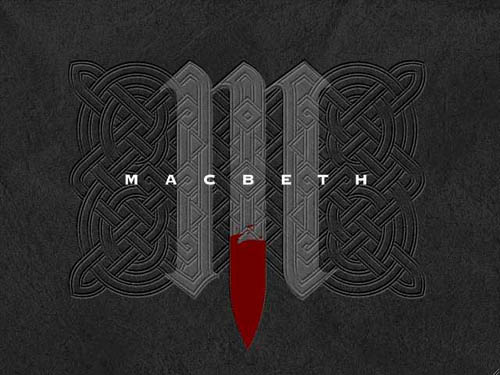
Remember HyperCard? Apple's original, card-based graphical application made it possible to craft book-like works out of a database structure, allowing for multiple trajectories through the text and the intermingling of graphics and motion media. (Smackerel.net provides a nice refresher on "When Multimedia Was Black & White") Many of the works built in HyperCard have taken on the status of relics, but the best of them never fail to impress, reminding us that some of the biggest conceptual leaps in digital media were made over ten years ago, and in many ways remain unsurpassed.
The Voyager Macbeth is a HyperCard-based CD-ROM that blew the lid off what seemed possible in a critical edition of a literary text (view demo). The disc is structured around the 1993 New Cambridge edition of the play, introduced by David Rodes, and thoroughly annotated by A.C. Braunmuller - both leading Shakespeare scholars and professors at UCLA. Producer and chief programmer Michael Cohen describes it as "a rich, immersive, book-like experience" - "a layered format." The text can be read, searched, listened to, watched, and even recited out loud with a pre-recorded actor reading opposite (a feature called "Macbeth Karaoke"). Trevor Nunn's seminal 1976 Royal Shakespeare Company production with Ian McKellan and Judy Dench supplies a complete audio track that can be brought into action instantly with a mouse click, beginning on any desired line. One can read the entire text this way, the pages turning automatically, with the impeccable cast of the RSC bringing it to life like a radio play.
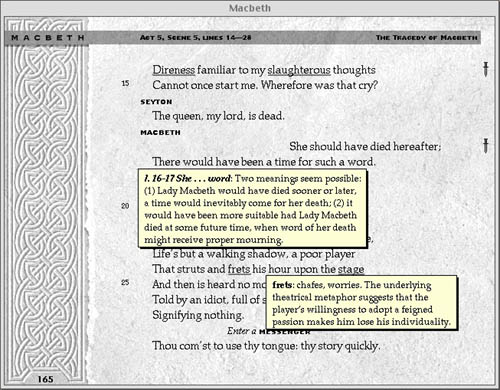
Each page is rich with annotations, which can be summoned as pop-up windows by clicking on underlined words or passages. You can also click on little dagger icons in the margins that provide further context or tie a speech to other moments and motifs in the play, or little film strip icons that indicate video clips are available. Here opens another region of this vast edition. The editors have provided lengthy clips, with commentary, from three of the greatest screen adaptations of Shakespeare's tragedy - Orson Welles' Macbeth (1948), Akira Kurosawa's Throne of Blood (1957), and Roman Polanski's The Tragedy of Macbeth (1971) - all of which can be viewed (albeit on a small screen - this would be different now) within the book.
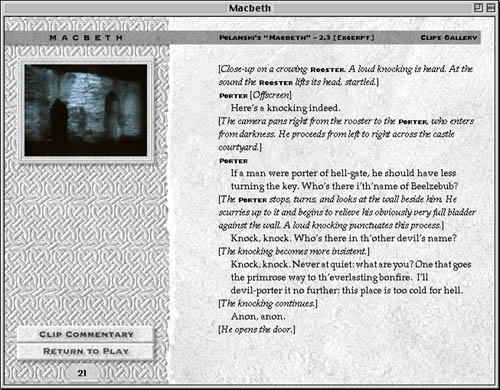
Other assets that expand the universe of the play and deepen the reader's investigation include a lengthy introduction by Professor Rodes, a library of critical essays, detailed background on Shakespeare's life and Elizabethan context, excerpts from the Holinshed Chronicles from which the play is drawn, a large archive of images documenting Macbeth's influence on western culture and various stage productions through the centuries, and important analytical tools such as character profiles, scene summaries and analysis, a full text concordance, and collation with other versions of the play (indispensable in Shakespeare scholarship). The only thing lacking, which could no doubt be solved if The Voyager Macbeth were being remade today, is the ability to write one's own notes in the text and to mark specific sections.
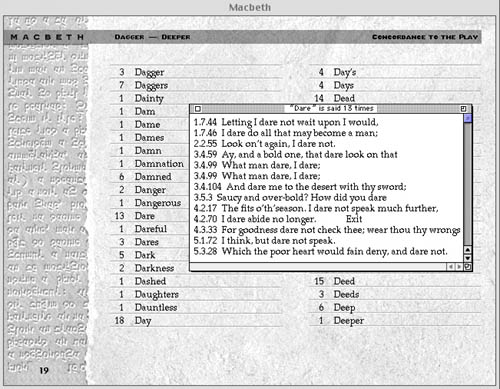
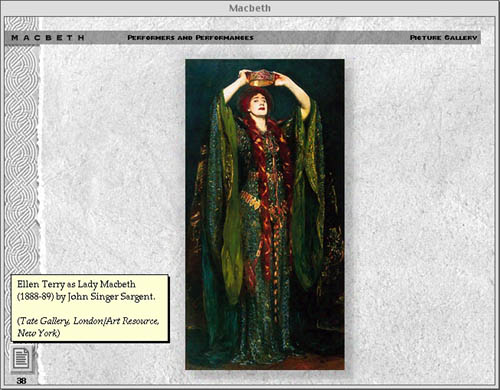
Chatting with Michael Cohen, I asked why so few electronic works of this caliber have been produced since the mid 90s. He pointed to the world wide web, which came into public use just as CD-ROMs were hitting their stride, and had the unfortunate effect of all but halting this period of development. "The web enables the making of small things." To some extent these things can be woven together, but the web is fundamentally not good at providing a center, which is essential for serious scholarship and textual analysis. "There is a place," he continued, "for well-considered, architected book-like materials." These materials should be able to weave together rich media and text in a way that paper cannot, yet still retain the focus and coherence of bounded print materials.
"But," I asked, "isn't the network something that should be used productively in these 'book-like' objects? There are resources on the web that can be of use, not to mention opportunities to communicate and work collaboratively with other students through the book. 'Macbeth Karaoke,' for instance, could incorporate a live chat tool that would make it possible to read with scene partners over the web." Or, students could interpret the text collaboratively with the Ivanhoe game (also profiled on nexttext). He agreed that the network should be fully employed, and that hopefully, tools would be developed that enabled the relatively easy production of bounded, media-rich works that can piggy-back on the web and draw on all the affordances of networked space. This suggests a vision of the future textbook that exists comfortably in the context of the web, and yet is not entirely of the web. Like a boat in the stream, it retains all the rigors and cohesion of the material world.
Cohen sees great potential in the recent increase in high school and university programs that provide laptops to every student. They'll need to load something on to that equipment, something more disciplined than a web browser. When you have unbroken access to your own machine, you can dive deeper - perhaps there is the potential for rich, immersive educational materials to make an entrance in programs like these.
Posted by ben vershbow at September 21, 2005 8:17 AM
